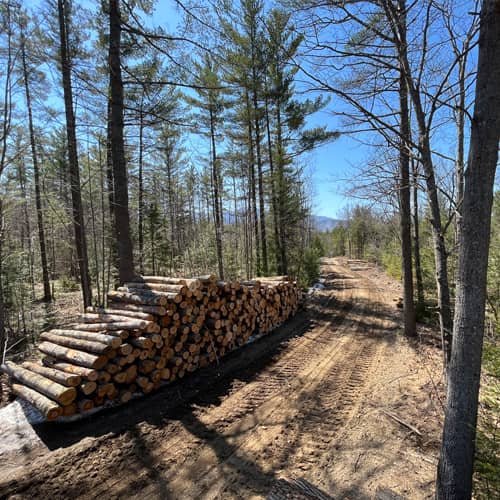Wildlife Habitat Improvements That Raise Timber Value Over Time

Managing a forest for both wildlife and timber production is not a trade-off—it is an opportunity. In New Hampshire, where private landowners often balance conservation goals with long-term investment, wildlife habitat improvement forestry can significantly increase timber value while supporting a healthier ecosystem. At Stillwater Forestry, we’ve seen firsthand how thoughtful wildlife habitat improvement not only enhances biodiversity but also improves the marketability of your timber over time.
How Wildlife Habitat and Timber Value Connect
Forests that provide diverse food sources and shelter for wildlife are also forests that grow stronger, healthier trees. Practices such as Timber Stand Improvement (TSI) create growing conditions that encourage the best trees to thrive. By removing weaker, diseased, or poorly formed trees, TSI reduces competition, allowing high-value species to increase in diameter and quality more quickly. The result is a forest that supports both wildlife and a future harvest of valuable timber.
Mast Trees: A Key Investment
Mast trees—such as oaks, hickories, and beeches—are vital for wildlife and for your forest’s long-term value. They provide food for deer, turkey, and other species, while also producing some of the most desirable hardwood on the market. Managing mast trees through selective thinning ensures that these high-value trees have the space and sunlight they need to reach their full potential. Over time, this not only sustains wildlife populations but also raises the overall quality of your timber stand.
Using Patch Cuts to Benefit Forest Health
Another proven technique is the use of patch cuts, which are small clearings designed to mimic natural disturbances. Patch cuts create a mosaic of habitat types across your property. For wildlife, these areas provide new browse and cover. For landowners, patch cuts encourage regeneration of valuable species and diversify the age structure of the forest. The younger growth can eventually produce timber of commercial value, while the remaining stand benefits from reduced competition.
The Long-Term Payoff of Habitat Improvements
Wildlife habitat improvement forestry is not a quick fix—it is a strategy that pays dividends over decades. By investing in practices that align with natural processes, landowners can expect healthier wildlife populations and higher-value timber at the time of harvest. It’s a holistic approach that enhances both ecological integrity and financial return.
Here are a few core strategies that combine wildlife and timber benefits:
- Timber Stand Improvement (TSI): Removes low-quality trees to favor the healthiest, most valuable species.
- Mast Tree Management: Promotes food production and premium hardwood growth.
- Patch Cuts: Stimulates regeneration and creates varied wildlife habitats.
- Selective Thinning: Improves stand quality and provides periodic income.
- Regeneration Cuts: Ensures future generations of high-value timber.
Partnering with Experts
Achieving this balance requires expertise in both forestry science and local ecology. As a first-rate provider of forestry services in New Hampshire, Stillwater Forestry brings decades of experience helping landowners manage their forests with both wildlife and timber goals in mind. Whether you own a small woodlot or a large acreage, the right management plan can maximize the value of your land while leaving a lasting legacy of habitat and beauty.
Are You Looking for Forest Management Services in New Hampshire or Vermont? Contact Stillwater Forestry Today!